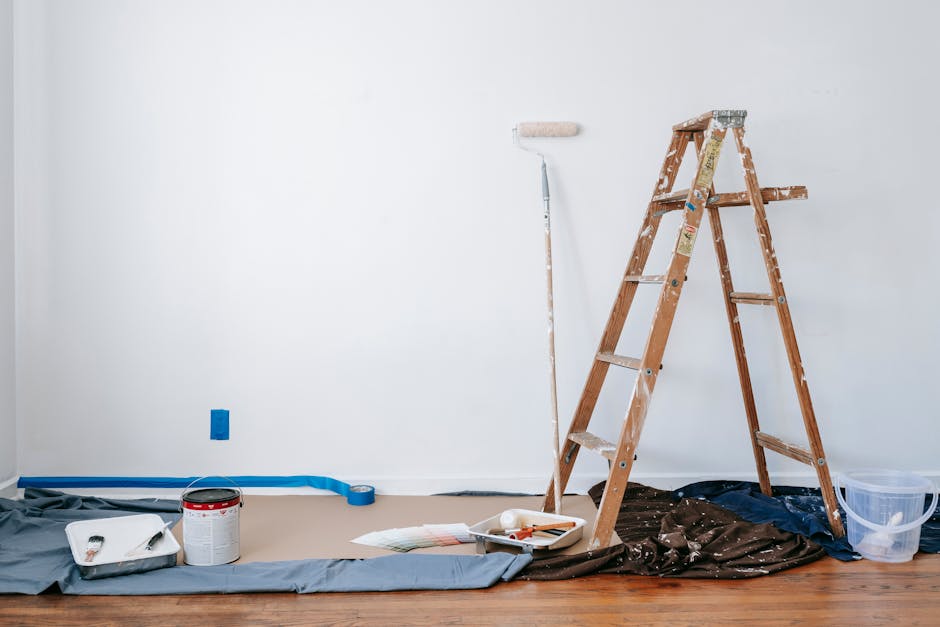Importance of room painting for home value
When selling your home, a fresh coat of paint can significantly increase its value. A well-painted room can make a home feel more modern and well-maintained, attracting potential buyers. It is a cost-effective way to enhance the overall look of your home without undertaking major renovations. Ensure that the colors chosen are neutral and appealing to a wide audience as this can help increase the marketability of your property.
Colors that enhance home value
Neutral tones like light gray, beige, and off-white are popular choices that can enhance your home’s value. Research suggests that homes with light gray living rooms sold for an average of $900 more than those with dark brown living rooms. Soft blue bathrooms and light blue or periwinkle bedrooms are also linked to higher home values. Keep in mind that bold or unusual colors may not appeal to everyone and could potentially lower your home’s value.
How room color influences buyer perceptions
Bright and neutral colors are more appealing to potential buyers as they create a sense of space and light. Colors like light blue, soft gray, and beige are popular choices for attracting buyers. These colors give a clean and fresh feel to the room, making it easier for buyers to envision themselves living in the space. On the other hand, bold and eccentric colors can deter buyers as they might find it harder to visualize their own belongings in the room. Stick to a simple color palette to maximize your home’s appeal to potential buyers.
Professional vs. DIY room painting
Professional painters are skilled in providing a high-quality finish and can complete the project efficiently. On the other hand, DIY painting can be more affordable, but it requires time and effort to achieve a professional look. When comparing professional vs. DIY room painting, consider your budget, timeline, and desired outcome.
Factors to consider before painting a room
Before painting a room, consider factors like the room’s purpose and the desired mood. Light and neutral colors are versatile and appeal to a broader range of buyers. To maximize the room’s appeal, consider the current decor and how the new color will complement it. Take into account natural light sources when choosing a paint color, as it can affect how the color appears in the room. Additionally, evaluate the cost and time required for the painting project to ensure it aligns with your budget and schedule.
Cost-effective room painting tips
To save money on room painting, consider painting the rooms yourself rather than hiring a professional painter. This can significantly reduce labor costs. Remember to properly prepare the walls by filling any holes or cracks with spackling paste and sanding them smooth before painting. Choose high-quality paint that is durable and long-lasting, as it may cost more initially but will save you money in the long run by requiring fewer coats and touch-ups. Opt for neutral colors that have a broad appeal and can easily complement different decor styles, increasing the overall value of your home.
Updating outdated rooms with paint
If you’re looking to update outdated rooms in your home, painting is a simple and cost-effective way to freshen up the space. A fresh coat of paint can instantly brighten up a room, make it appear larger, and give it a more modern look. Consider choosing light, neutral colors to make the room feel more spacious and inviting. Before starting, make sure to properly prepare the walls by cleaning and sanding them to ensure a smooth finish. Updating outdated rooms with paint can significantly increase the overall value of your home, making it more appealing to potential buyers.
Choosing the right paint finish
When selecting a paint finish for your walls, you should consider different options like Flat, Eggshell, Satin, Semi-gloss, or High-gloss. Each finish offers unique characteristics. Flat paint provides a matte appearance but is not as durable. Eggshell has a slight sheen and is easy to clean. Satin is popular for its velvety look and durability. Semi-gloss is shiny and resistant to moisture, ideal for kitchens and bathrooms. High-gloss is the shiniest finish, reflecting light and easy to clean. Choose a finish based on the room’s purpose and desired look for the best outcome.
Maintaining painted rooms for long-term value
To maintain the value of your home over time, it’s essential to keep your painted rooms looking fresh and well-maintained. Repainting rooms can help increase your home’s overall appeal and market value. Here are some key tips to keep in mind:
- Repair any chipped or damaged paint promptly to prevent further deterioration.
- Regularly clean walls to remove dust, dirt, and stains that can degrade the paint.
- Consider using high-quality paint that is durable and easy to clean for long-lasting results.
- Opt for neutral or universally appealing colors when painting to attract a broader range of potential buyers.
- Properly prep walls before painting by filling in holes, sanding rough surfaces, and priming if necessary.
By taking these simple steps, you can ensure that your painted rooms stay in excellent condition, enhancing the value and aesthetics of your home in the long run.
Conclusion: Enhancing home value through room painting
To wrap things up, painting your rooms can be a simple yet effective way to boost your home’s value. The colors you choose and the quality of the paint job can significantly impact how potential buyers perceive your home. Remember, neutral tones are generally favored as they appeal to a wider audience and make rooms appear more spacious. Additionally, a fresh coat of paint can freshen up the appearance of your space, making it more inviting and modern. Investing in room painting can be a cost-effective strategy to increase your home’s value without breaking the bank.



